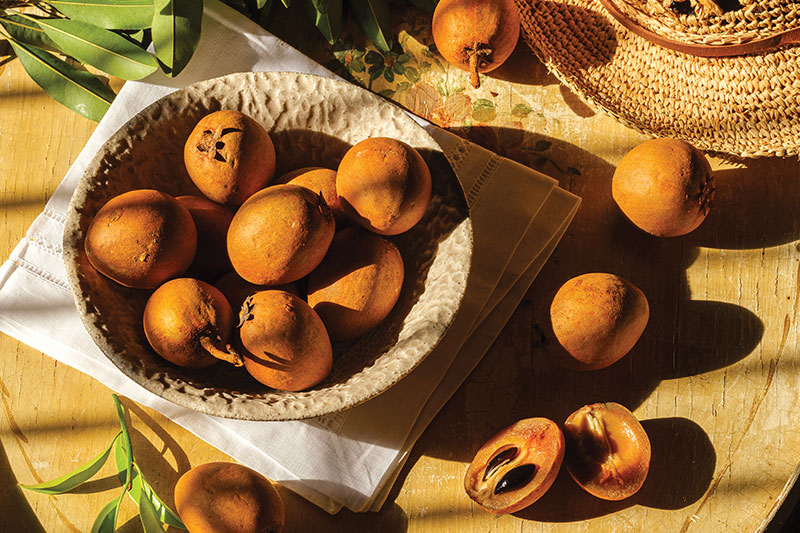
Sapodilla: Hidden Treasure
This underrated tropical fruit hides a rich, molasses-like sweetness and exotic fragrance beneath its dull exterior
Words: Ariya Chaiyarit
Photo & Style: Samatcha Apaisuwan
Despite its mundane appearance, the sapodilla, or “la-mood” in Thai, is a tropical gem with a unique taste and exotic fragrance – a must-try for foodies.
While many fruits are judged by their eye- catching looks, the sapodilla’s drab earthy colour and egg-like shape means it is easily overlooked. However, beneath its skin lies a sweet, aromatic flesh that surprises and often delights.
Native to Central America, sapodilla was brought to the Philippines during the Spanish colonial era before making its way across most of Asia, including Thailand, India, Pakistan, Bangladesh, Cambodia, Vietnam, Malaysia, and Indonesia.
The sapodilla is a large berry with a round or oval shape. Unripe sapodillas produce a white, rubbery sap known as chicle which is used in chewing gum.
This natural gum disappears when the fruit ripens. Eating raw sapodilla is not recommended due to its bitter taste and potential for mouth irritation. When ripe, however, sapodillas transform into a deliciously sweet and fragrant fruit, often likened to the rich flavour of molasses. Its juicy flesh ranges in colour from pale yellow to brown and has a slightly gritty texture.
At its core, the fruit contains several hard, glossy black seeds that should never be eaten. These seeds contain toxic chemicals that can cause stomach ache and vomiting, while their small hook at the tip can be a choking hazard.
Sapodilla is commonly enjoyed fresh but also serves as a delectable ingredient in desserts like pies and baked goods. And it can be preserved as jam or even used to make wine.
This humble fruit is also rich in fibre that supports bowel health, while its high tannin content provides anti-bacterial and anti- parasitic benefits. It is also a good source of vitamin C, potassium, copper and iron. However, people with diabetes are advised to enjoy sapodilla in moderation due to its high sugar content.
Available practically all year round, sapodilla may not be visually appealing, but its succulent flavour can be love at first bite. Try it once, and you might just find yourself hooked to its irresistible sweetness.
